Building an effective marketing funnel helps businesses understand customer needs in each stage of the purchasing journey, thereby deploying appropriate strategies to increase conversion rates and sales.
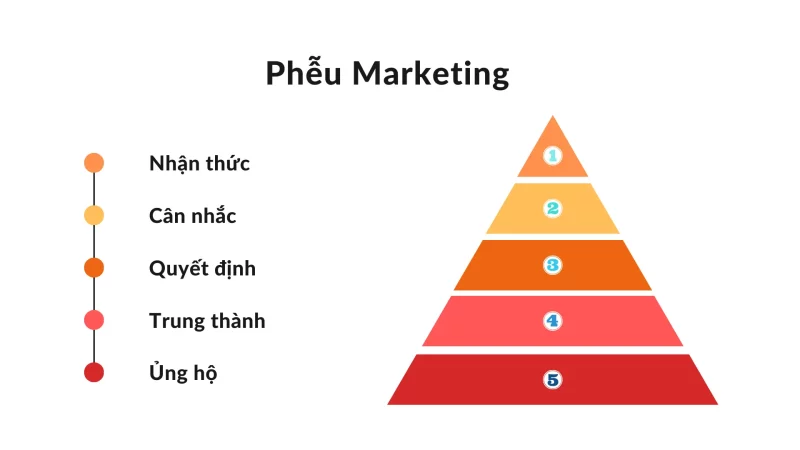
When potential customers become customers of a business, they need to go through specific stages on the customer journey from the stage of identifying problems, searching for information, considering many options to the stage of Buy and come back to support.
Therefore, to convert a potential customer into a customer, businesses also need to build a marketing funnel suitable for each stage of the customer journey, thereby having strategies suitable to customer needs. customers on their customer journey.
Join us to learn about marketing funnels as well as how to build effective marketing funnels in this article.
What is a Marketing Funnel?
Marketing Funnel is the stages that customers need to go through to be able to go from potential customers to official customers of the business. The marketing funnel is closely related to the stages of the customer journey.
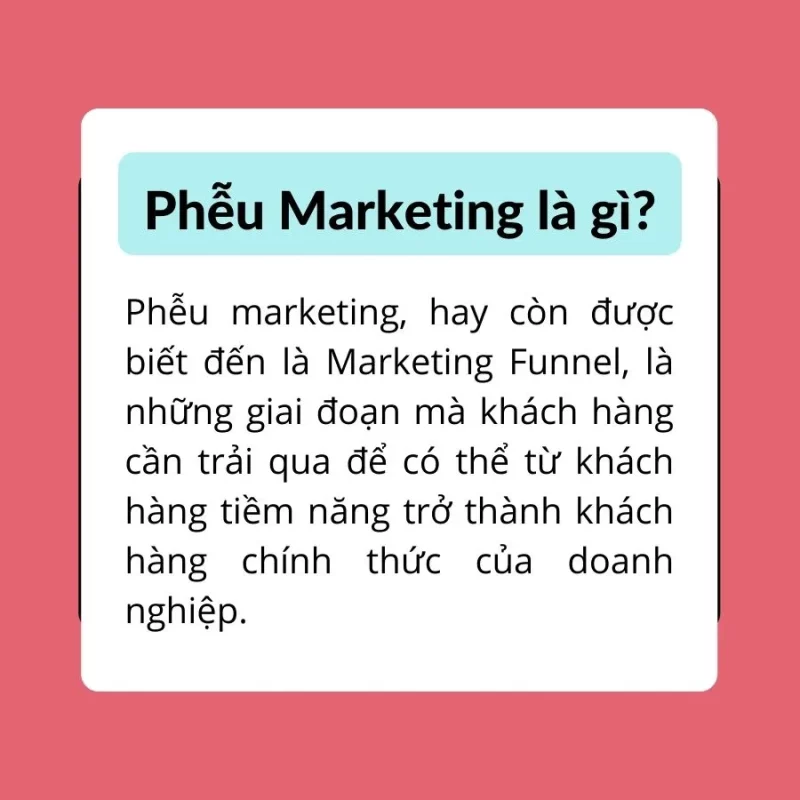
A customer journey is the entire experience a customer has with an organization (business). It includes all customer interactions across all channels, devices and touch points throughout every stage of the customer lifecycle – from product awareness, service, company until becoming a loyal customer of the business.
Based on the customer journey, the marketing funnel will also include appropriate stages to increase conversion rates, turning potential customers into business customers.
Read more : What is Customer Journey & 10 steps to build an effective Customer Journey Map
Why do businesses need to build a marketing funnel?
After learning the concept of marketing funnels as well as each stage that a marketing funnel today requires. So does a business need to build a marketing funnel? What benefits can a marketing funnel help businesses possess?
In short, the marketing funnel can bring businesses three main benefits as follows.
Marketing Funnel helps bring positive experiences to customers
Building a marketing funnel will help businesses understand customers better. Each customer at each stage of the marketing funnel will have different needs. Therefore, the marketing funnel will help businesses come up with appropriate strategies for each stage of the marketing funnel, thereby giving customers a positive experience and making them more satisfied when cooperating with the business.
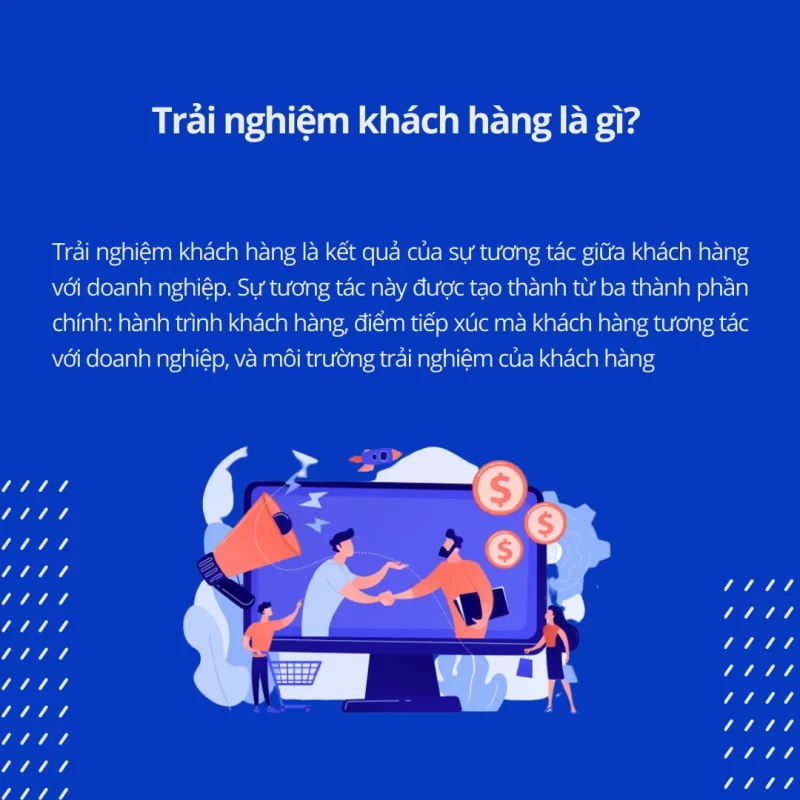
When customers have positive experiences , they will also be motivated to stay longer with the business and become loyal advocates of the products/services the business provides.
Read more : What is customer experience? Definition and how to apply it to business
Marketing funnels help increase conversion rates
Marketing funnels play an important role in increasing conversion rates, turning potential customers into business customers.
Why can building a marketing funnel be so effective in increasing conversion rates?
The most important reason is that when building a marketing funnel, businesses will be able to possess useful information about the needs and problems that customers are facing, thereby providing solutions that suit their needs. their needs and increase conversion rates.
The marketing funnel also helps businesses clearly identify what needs to be done to solve customer problems, depending on each stage in the customer journey .
Understanding customers at each stage of the marketing funnel will give businesses a large number of quality potential customers, thereby effectively increasing conversion rates.
Marketing Funnel helps businesses build appropriate marketing strategies
Each customer at each stage of the marketing funnel will have different needs or encounter different problems. Businesses will not be able to apply the same marketing strategy to people at the bottom of the funnel as they do to people at the top of the funnel.
Therefore, the marketing funnel will help businesses understand customers better so they can build appropriate marketing strategies for customers at each stage of the funnel.
5 main stages of marketing funnel today
Basically, target customers need to go through 5 main stages of the current marketing funnel.

Stage 1: Awareness (Awareness Stage)
During this stage, the business’s target customers will realize they have a problem that needs to be solved or a need that needs to be met.
However, customers are still having difficulty finding solutions to their problems. They will have a lot of questions about the problem they are facing and hope someone will provide them with truly useful information to answer these questions.
In the awareness stage, customers are actually looking for information that can help them solve a problem.
Therefore, to be able to increase conversion rates, businesses need to understand who their target customers are.
Target customers are the group of customers that a business wants to reach through its marketing activities and campaigns.

This is a group of customers who are more likely to be interested in the business’s products and services than other customer groups. As for the target customer group, they share common characteristics such as: demographics, education level, income, psychology and behavior,…
Once you understand your target customers as well as their needs and problems, businesses can convey appropriate marketing messages or content strategies to attract customers and lead them to success. to the next stage of the marketing funnel.
Read more : What is a target customer & 5 ways to identify target customers
Stage 2: Consideration (Consideration Stage)
At this stage, potential customers really understand their problem and know what solution they need. However, potential customers at this stage still need time to learn more about the solution the business provides and wonder whether that solution really suits their needs or not.
In the consideration stage, customers will look at a business’s products, along with those of other competitors, and begin to learn about the features and benefits of different products, thereby considering them. Consider carefully to make a purchasing decision.
From a marketing perspective, the business’s goal at this stage is to advertise to customers about the features and benefits of the product and why the product features the business offers are good. better than competitors (Unique Selling Points). This will make the business’s products more attractive in the eyes of customers.
At this stage, businesses need to provide content and information about the product and convince customers why they should choose the business’s products and not the products of other competitors.
Stage 3: Making a decision (Decision Stage)
This is the stage of the marketing funnel where customers are willing to pay to buy the product. They may be considering choosing between your business’s product or a competitor’s product. For the decision-making stage, the customer is at the end of the purchasing funnel and knows clearly what problem he has and what solution he needs for that problem.
This is the step where customers make decisions about which product to choose among countless different choices. Therefore, to convince customers to buy the product, providing attractive sales discounts or encouraging customers to try the product or other promotional programs will be factors that can make customers decide to buy. product.
Read more : How to calculate percentage discount
Stage 4: Loyalty Stage
In stage 3, if customers make the decision not to buy a business’s products, businesses can still provide useful information and content to them to improve brand recognition and increase customer likelihood. That customer will decide to buy the product the next time they have a need.
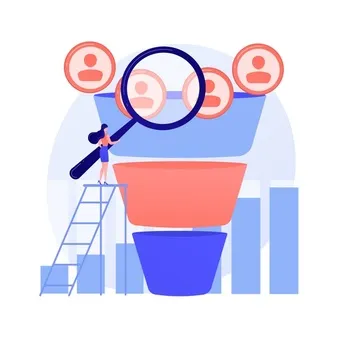
On the other hand, if a customer makes a decision to buy a product, the business needs to turn the customer into a loyal customer. To be able to retain customers longer, businesses can deploy effective customer service activities to bring positive customer experiences to them, thereby increasing customer satisfaction and turn them into loyal customers of the business.
Stage 5: Support (Advocacy Stage)
When a business can make customers happy, they will not only be loyal to the business but also show their support by recommending the business’s products/services to friends and acquaintances if they have any. needs or to people who are experiencing similar problems.
A business’s customers will introduce the benefits and effective features of the products/services that the business provides to others. With the introduction of a friend or relative, the business will certainly become more reputable in the eyes of customers than other options.
This is also the stage where businesses “mobilize” customers to support their products/services by becoming the person who conveys marketing messages to other potential customers and encourages them to go through each stage. of the marketing funnel.
Strategies suitable for each stage of the marketing funnel
Each stage of the funnel will require different strategies. So what strategies will each stage need?
Strategy in the awareness stage
In the awareness stage, customers have just realized they are facing a certain problem and want to find solutions to the problems they encounter. For this stage, customers do not yet know the business or the products/services that the business provides. Therefore, marketing activities at this stage will be mainly aimed at advertising to increase brand awareness.
Because this is the first stage of the funnel, businesses need to focus on attracting as many potential customers as possible. Below are some strategies for businesses to increase brand awareness and attract a large number of potential customers.
Attract customers from organic sources (SEO)
SEO is the acronym for Search Engine Optimization. SEO includes a set of actions and methods to improve the display ranking of a website on search engine results pages, thereby increasing organic traffic to the website.
SEO is a means to help businesses increase brand awareness and attract customers’ attention to the products and services that businesses provide.
Blog posts on business websites or product pages need to be SEO optimized to help businesses effectively increase traffic to the website. Determine the correct profile of the target customer your business is aiming for, recognize their pain points and write blog posts that provide valuable information to help customers solve their problems. that they encounter.
Read more : What is a customer portrait & 3 steps to drawing a target customer portrait
These blog posts can contain keywords that customers often search for to increase the likelihood that customers will see your business’s posts on search engines.
Make sure that businesses can clearly identify the main keywords that target customers often search for on search engine bars such as Google, Coc Coc, Bing,… to attract visits to blog posts from the source. organic search.
If the content of the blog post is really useful, customers will remember the business and may even sign up for emails to receive news and new articles in the future.
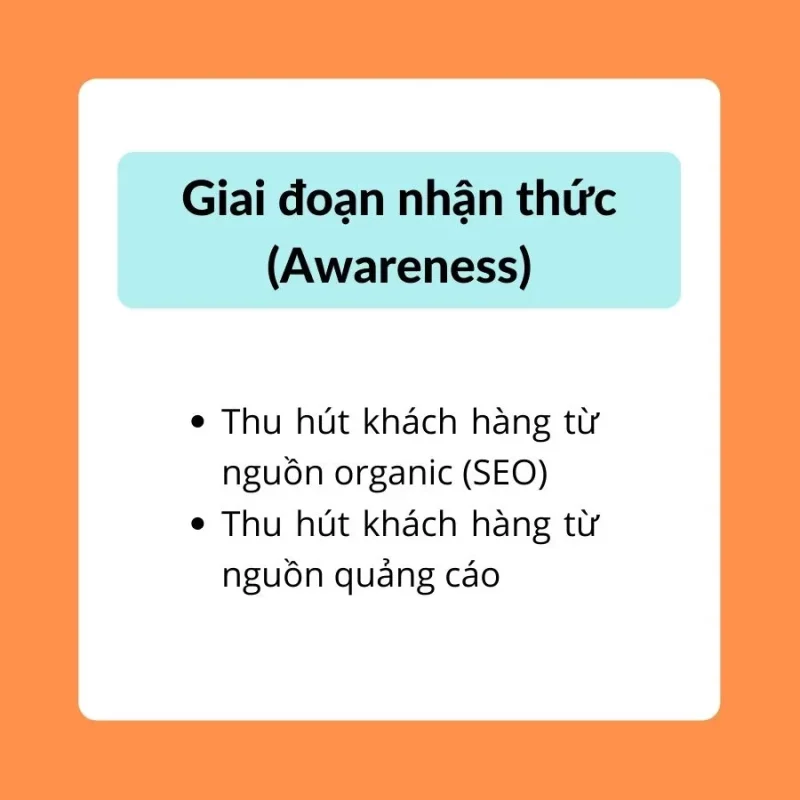
Attract customers from advertising sources
PPC (Pay per click) advertising campaign, also known by other names such as Paid search, Search engine advertising, is a popular online marketing channel.
This is a direct marketing method in which marketers pay to appear on search engines to attract more potential customers.
Pay per click is fully understood as “Pay per click”. With this form of marketing, the marketer must pay every time someone clicks on the ad.
There are many platforms that can place PPC ads such as Google, Bing, Coc Coc…
Read more : What is Online Marketing? 7 main activities in Online Marketing
Acquiring customers through advertising sources is also one of the most popular top-of-funnel marketing strategies used for lead generation. These ads are displayed to a large number of potential customers who want to use the business’s products/services based on their behavior on social networks or search engines.
So, by using PPC advertising, businesses can attract and generate quality leads.
Strategy in the consideration stage
The consideration stage of the marketing funnel will be the stage where customers are interested in the business’s products and services. Customers at this stage of the marketing funnel have accurately identified their problem and have begun to search and research the most suitable solution for them.
So what are the appropriate strategies for customers at this stage?
Content Marketing
Nowadays, customers often tend to search for information on the Internet before making a purchasing decision.
Therefore, providing useful and valuable content to customers, suitable for each stage of the marketing funnel, will help businesses attract customers and increase conversion rates. This is also a method of Inbound Marketing strategy .
Read more : 3 steps to building an effective Inbound strategy
According to Hubspot, Inbound Marketing is a method of reaching customers based on content and interaction that brings useful value to customers – about the problems they need to solve related to the business’s products. Karma. In Inbound Marketing, potential customers will actively search for businesses through channels such as blogs, search engines and social networks.
When customers are considering many options, providing useful content to customers to help them solve their problems will make customers have a better impression of the business and be willing to spend. Pay for the solution that the business provides.
At this stage of the marketing funnel, the types of content that businesses should apply include:
- Blog
- Ebook
- Case Study
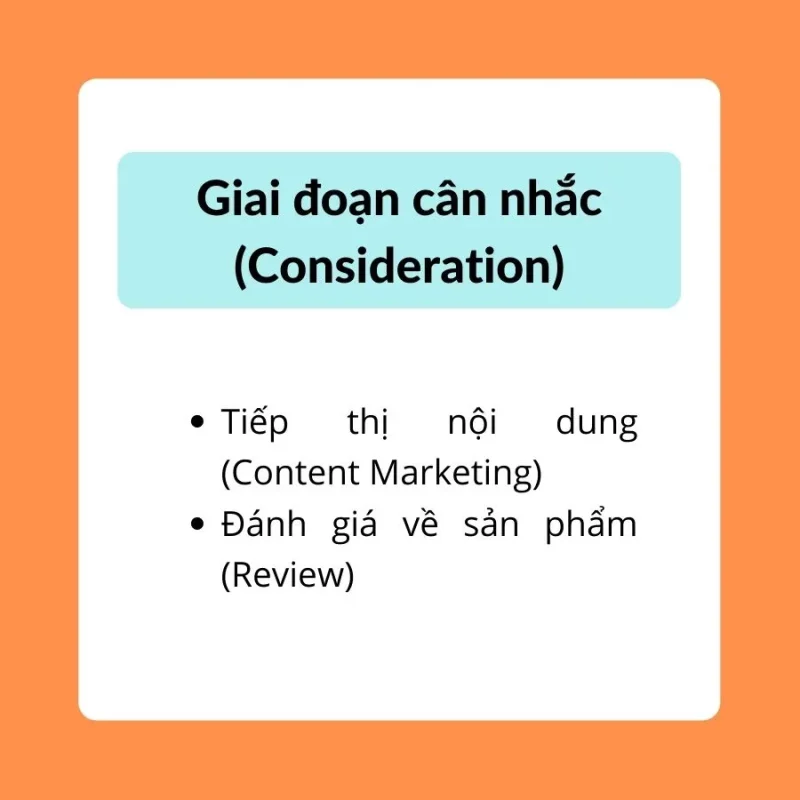
Product Review (Review)
During the consideration stage, potential customers will have many options and product reviews will encourage customers to make faster purchasing decisions.
Businesses can use customer reviews and feature them on their website. Besides, businesses can also ask influencers to write detailed product reviews and share them with their audience. These things will make customers trust the products/services that businesses provide more and be willing to pay and invest to use the products/services.
Strategy in the decision-making stage
This is the stage of the marketing funnel where businesses need to convince potential buyers to take action and make a purchase. Therefore, all marketing strategies at this stage focus on creating a sense of urgency and making it easy for customers to complete the purchase.
Some suitable strategies at this stage can be listed as follows.
Offer a free product trial experience
Offering a free trial or live demo helps customers get a better overview of your business’s products/services, thereby helping them make faster purchasing decisions. These strategies are especially useful for businesses that provide technology products/services or those that follow a B2B business model .
Read more : What is B2B & 4 popular B2B models in business
Demos can help customers better understand the product and experience the user interface and product features for themselves. This aids the decision-making process, especially in the case of complex software and tools.
Similarly, a free trial encourages people to try out your product or service before they invest money. A good experience with a trial often translates into a subsequent purchase.
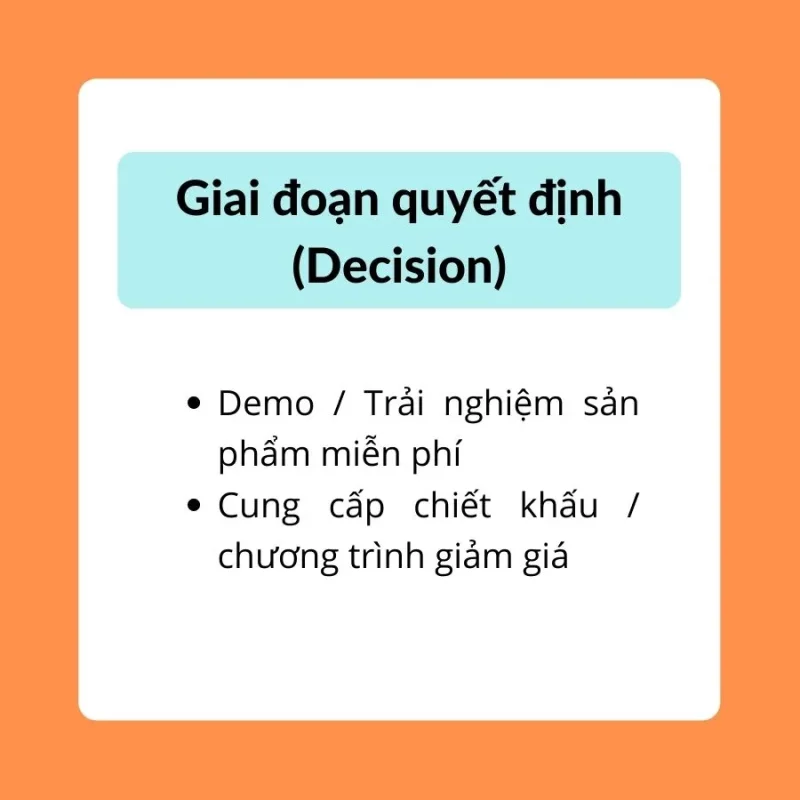
Provide consulting services to customers
For the decision-making stage of the marketing funnel, to motivate customers to make purchasing decisions, businesses can provide free consulting services to accurately listen to needs and problems. of customers as well as their desire for a suitable solution.
Free consultation will also make customers feel the enthusiasm of the business in helping them and providing useful information, from which customers will also feel sympathy for the business and make decisions. Buy faster.
Offer sales discount programs
Sales discounts play an important role in promoting customers’ purchasing decisions.
A sales discount is a percentage discount that a seller gives to a buyer, often applied to promote demand and purchasing decisions of potential customers.
Sales discounts are often accompanied by conditions such as: payment in cash, quantity purchased to receive a discount or early payment… agreed upon in economic contracts or commitments to buy and sell. row.
When implementing discount programs to encourage customers to make purchasing decisions, businesses can take advantage of customer psychology as follows:
- Emphasize missed opportunities such as discounts on new items and products for a certain short period of time.
- Use the “buying” status feature on your sales page by creating pop-ups like “Customer x is buying this product” to attract attention and create buying incentives.
- Create “limited time” opportunities and provide expiration dates for product and service discounts.
- Emphasize that: “Discount time for the product is about to end.” That way, customers will make purchasing decisions faster to enjoy incentives and promotions.
Read more : What is a sales discount – 2 common ways to calculate sales discounts
Strategy in the loyalty and advocacy stage
Once customers have made a purchasing decision, how can businesses increase the percentage of customers who will return to purchase in the future and keep them staying longer with them?
Appropriate strategies at this stage of the marketing funnel can include:
Provide customer service
Customer Service (or Customer Service) is a service that businesses provide to customers with the purpose of helping customers have the most positive experiences during their interaction with the business.
To provide a positive experience for customers and build good relationships with them, businesses can provide customer service after the purchase stage as follows:
- Support and advise customers during the process of using products/services
- Solve customers’ difficulties when they use products/services
- Ask for customer feedback and opinions about the product/service as well as the care service that the business provides
- Encourage customers to recommend products/services to people in need
Read more : What is Customer Service & 7 ways to provide the best customer service
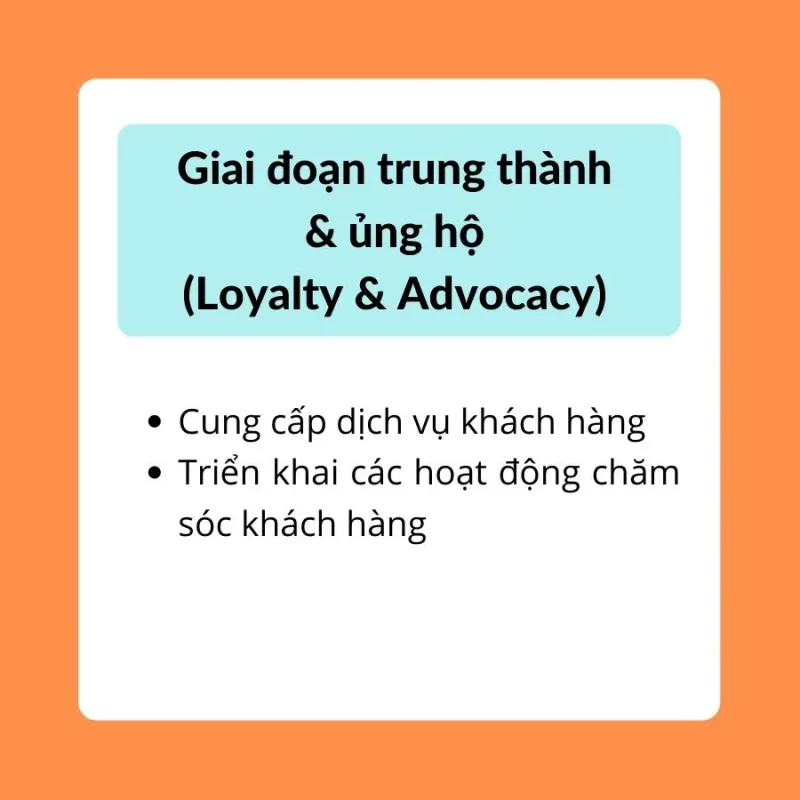
Build a customer care process
The customer care process is a collection of sample steps and a systematic way of working of a business when interacting with customers. That is the lever for businesses to maximize customer experience and bring satisfaction to customers. Thanks to this, we build a beautiful image in the minds of customers and encourage customers to become loyal supporters of the business.
3 steps to building an effective marketing funnel
What do businesses need to do to build an effective marketing funnel?
Step 1: Identify customer portraits
The first step in building a marketing funnel is for businesses to determine their customer profile.
A buyer persona is a profile of an ideal customer that includes information such as demographics, interests, behavioral characteristics and factors that determine the subject’s purchase.
Buyer personas are built on market research , real-world data, and educated guesses about potential and current customers.
Read more : [Instructions] The 6 most effective market research steps in marketing
To identify target customers, businesses can ask the following questions:
- What is the customer’s pain point?
- What are their needs and desires for a suitable solution?
- What are the characteristics of target customers (demographic, behavioral, psychological, etc.)?
Step 2: Build appropriate strategies for each stage of the marketing funnel
For each stage of the marketing funnel, businesses need to identify strategies suitable for each different stage of the funnel.
For the first stage of the marketing funnel, businesses need to attract potential customers and increase brand awareness by implementing advertising campaigns or optimizing SEO to increase traffic from organic sources.
For the middle stage of the marketing funnel, businesses need to convince customers to choose their products and services by providing useful content to customers as well as consulting and allowing customers to use the product for free. costs to be able to make faster purchasing decisions.
At the final stage, businesses should have effective customer care strategies and services to increase the likelihood of customers returning to buy in the future and own a large number of loyal customers.
Step 3: Build sustainable relationships with customers
For the final stages of the marketing funnel, establishing relationships with customers is extremely important. This will affect the decision of whether customers will buy products or services from the business or not.
To build relationships with customers, businesses need to understand them and show them the care and attention that businesses can provide to customers, thereby helping the relationship between customers. and businesses become more sustainable.
Summary
In this article, we have provided you with detailed information about marketing funnels such as: Overview of marketing funnels as well as 3 steps to building an effective marketing funnel. Happy siblings success!
Check out some other good articles:




